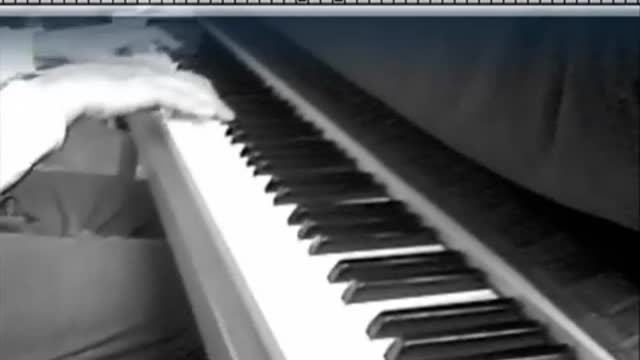Premium Only Content

On Green Dolphin Street - Jazz Piano solo improvisation
More about the composer:
Bronisław Kaper began playing the piano at the age of six, and soon demonstrated considerable talent on this instrument. He studied composition and piano at the Warsaw Conservatory, and law at Warsaw University, in deference to his father's wishes.
Soon after completing his studies, Kaper went to Berlin - then a city with many theaters and cabarets, where many artists from Eastern Europe - mainly Russia, Poland and Hungary were trying their luck. In Berlin, in the late 1920s, Kaper met another young composer, the Austrian Walter Jurmann. The two decided to work as a team, first in Berlin and then, after the Nazis took power in Germany, in Paris. The emergence of sound film created a major market for their talents. In Paris, they composed music for films directed by persons who had fled Hitler.
In 1935, upon being offered a seven-year contract with MGM by Louis B. Mayer, Kaper and Jurmann emigrated to the United States, where they continued their work. One of their first American films was the Marx Brothers comedy A Night at the Opera (1935), for which they scored the song \"Cosi-Cosa\". Kaper went on to compose the music for nearly 150 Hollywood movies, and won an Oscar for the musical Lili. His score for the Orson Welles film The Stranger (1946) is an interesting example of how much the soundtrack can contribute to a classic Hollywood film. With Walter Jurmann he co-wrote the song \"San Francisco\" for the film San Francisco (1936), and the theme music and several scores for the Quinn Martin television series The F.B.I.
In 1959, Kaper composed most of the music for MGM's production on Green Mansions with Audrey Hepburn and Anthony Perkins, after MGM had asked Brazilian composer Heitor Villa-Lobos to write the score. Only some of Villa-Lobos' music was actually used in the film; much of the rest was later arranged as the secular cantata Forest of the Amazons, which Villa-Lobos recorded for United Artists Records with the Symphony of the Air.
One of his last projects under MGM contract was also his most ambitious: scoring the massive 1962 remake of Mutiny on the Bounty, involving epic sea themes and native Polynesian music. Kaper's interest in melding exotic indigenous music with traditional cues continued in Lord Jim, which introduced the unique sound of gamelan orchestras to Western audiences for the first time in the mid-60s.
In Los Angeles during the 1940s, Kaper was part of a significant community of German exiles, including Thomas and Heinrich Mann, Bertolt Brecht, Arnold Schoenberg, Lion Feuchtwanger, Max Reinhardt, Hanns Eisler, and Berthold and Salka Viertel.
-
 3:48:32
3:48:32
Right Side Broadcasting Network
8 hours agoLIVE REPLAY: Pres. Trump and Ukrainian President Zelenskyy Meet and Hold a Press Briefing - 2/28/25
223K140 -
 2:59:13
2:59:13
The Charlie Kirk Show
5 hours agoTrump vs. Zelensky Reaction + The Epstein Misfire + Charlie vs. Newsom | Schimel, Marlow, Baller | 2.28
171K60 -
 55:05
55:05
The Dan Bongino Show
7 hours agoAmerica Is Back In The World Stage, And We Love To See It (Ep. 2433) - 02/28/2025
825K1.56K -
 49:29
49:29
The Rubin Report
7 hours agoDetails About Joy Reid’s Weeping Farewell No One Noticed with Co-Host Megyn Kelly
99.5K137 -
 15:36
15:36
Tactical Advisor
5 hours agoMUST HAVE AR15 Upgrades for Under $100
53.7K3 -
 2:16:59
2:16:59
Benny Johnson
6 hours ago🚨Epstein Files COVERUP EXPOSED: FBI Sabotaging Trump, DELETING Evidence?! | Tapes 'MISSING'?!
154K345 -
 59:29
59:29
Steven Crowder
8 hours agoCrafting Crowder's Comedy Gold | Behind the Scenes
287K129 -
 2:06:44
2:06:44
Tim Pool
7 hours agoTHE END OF THE WEST, Will We Survive Without Christianity? | The Culture War with Tim Pool
143K92 -
 2:01:13
2:01:13
LFA TV
20 hours agoBODYCAM FOOTAGE OF TRAFFIC STOP! | LIVE FROM AMERICA 2.28.25 11AM
82.2K33 -
 1:23:10
1:23:10
The Big Mig™
9 hours agoGlobal Finance Forum From Bullion To Borders We Cover It All
57.7K3